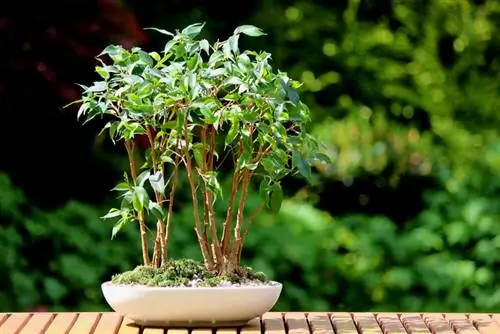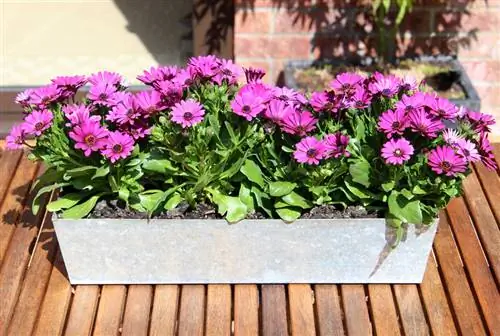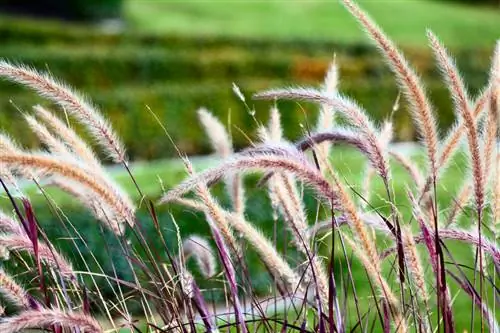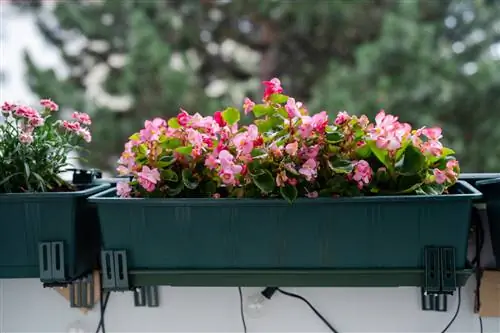- Author admin [email protected].
- Public 2023-12-16 16:46.
- Last modified 2025-01-23 11:21.
The balcony is not exclusively reserved for summer flowering plants. With its evergreen foliage, the Benjamini makes a decorative contribution to the creative appearance. As a rainforest plant, a Ficus benjamina freezes quickly and has an ambivalent relationship with the sun. You can find out how to stage your birch fig on the balcony without damage here.
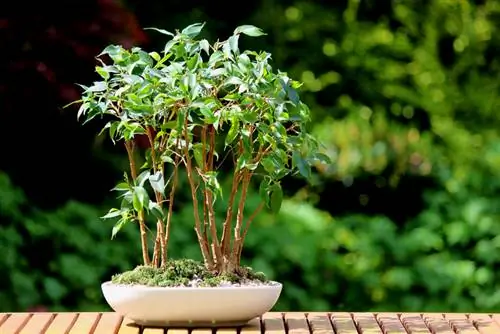
Can you keep a Ficus Benjamini on the balcony?
A Ficus Benjamini can be kept on the balcony as long as temperatures are between 18 and 30 degrees Celsius and a sunny, partially shaded location is chosen. Before final placement, the plant should acclimate in the shade for 8 to 10 days to avoid sunburn.
Time window opens after the Ice Saints
Your Benjamini reacts indignantly to temperatures below 16 degrees Celsius by dropping its green leaves. If the mercury drops to freezing point in just one night, the tropical rainforest plant is usually hopelessly lost. The following criteria guarantee a carefree stay on the balcony for Ficus benjamina:
- Temperatures between 18 and 30 degrees Celsius
- A sunny, partially shaded location
- Ideally with sun in the morning or early evening
- Green-leaved species also in light shade
- Bonsai additionally protected from pelting rain
In the Central European climate, experience shows that after the Ice Saints the temperatures settle down to a bearable level. Nevertheless, in rough locations there is still a risk of nightly ground frosts until after the sheep's cold in early/mid June. Therefore, keep an eye on the weather forecasts so that you can put away your birch fig in the evening if necessary.
Hardening off prevents sunburn
Before your birch fig takes its final location on the summer balcony, it should acclimatize. If your Benjamini suddenly moves from a window seat into unfiltered sunlight, leaf damage is inevitable. To prevent this from happening, the plant is placed in a shady to semi-shady place for 8 to 10 days.
Sunburn can be recognized by yellowish spots with dark edges. These only occur where the sun's rays hit the leaf tissue and do not spread further. This makes it easy to distinguish them from symptoms of illness.
Tip
Please only put your birch fig on the balcony if your cat cannot nibble on the leaves there. The plant contains toxic ingredients that can cause serious or even life-threatening damage to your pet's he alth. In free-living cats, natural instinct usually warns of the toxins.

